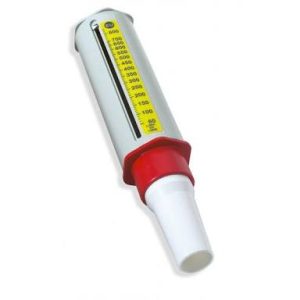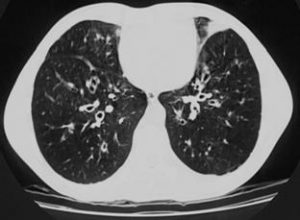Allergic Asthma is a chronic lung disease in which the airways are very sensitive to allergens. After exposure to allergens, there is airway inflammation leading to narrowing of the airways and mucus production.
Symptoms and signs of Allergic Asthma:
Asthmatic patients can present with a cough, wheezing, shortness of breath or chest tightness. Patients may note day-night variations in their symptoms.
Symptoms are usually more marked early in the morning and in specific seasons or after exposure to dust and allergens. Some patients have exercise-induced asthma and develop exercise intolerance, cough or shortness of breath after exercise.
Some patients may only present with a cough without wheeze, shortness of breath or chest tightness. This is termed as cough variant asthma.
How do we diagnose allergic asthma?
Allergic Asthma is mostly a clinical diagnosis. Investigations are advised to rule out other diseases and for staging the severity of the disease.
Following are some of the investigations advised in asthmatic patients.

Chest x-ray:
Radiographs in asthmatic patients may reveal hyperinflation. This is also done to rule out other diseases.
Spirometry:
Spirometry is done to differentiate between obstructive and restrictive lung diseases. Obstructive diseases include allergic asthma, chronic bronchitis, emphysema, and bronchiectasis. Restrictive lung diseases include interstitial lung diseases and fibrotic lung diseases.

Peak expiratory flow rate:
The expiratory flow rate is assessed through a device called peak flow meter. The peak flow meter can be used by the patient at home both for initial diagnosis and to assess severity and response to treatment.
Day-night variation in peek-expiratory flow meter readings of more than 20% for three days is suggestive of allergic asthma.
Similarly, asthmatic patients can compare their peak flow meter reading during exacerbations with their personal best. 50% reduction is suggestive of severe asthma while peak flow meter reading of 33% of personal best is life-threatening asthma and urgent emergency care is warranted.
Other investigations:
These include eosinophil count, IgE levels and bronchial provocation test.
Which conditions can mimic allergic asthma
Some patients can be misdiagnosed and labeled as asthmatics. The following are some conditions which can present with wheezing, shortness of breath or a cough.
- Heart failure may present with a cough and wheeze:

Patients with heart failure can sometimes present with wheezing and shortness of breath. This is called cardiac asthma.
- Chronic bronchitis and emphysema:
These conditions usually occur in smokers after the age of 50 years. The main difference between asthma and chronic bronchitis/ emphysema is the reversibility factor in asthmatics after avoidance of allergens or with treatment.
- Bronchiectasis:
Bronchiectasis is a permanent dilation of the airways due to repeated childhood infections or congenital disorders. There is excess sputum production, shortness of breath and wheezing.
- Foreign body inhalation:
Foreign body inhalation occurs in children and can present with unilateral signs and symptoms. Foreign body inhalation usually leads to obstruction of the right-sided bronchus due to its anatomy.
- Tumors:
Obstruction by a tumor or growth in the airway can lead to wheezing and shortness of breath.

- External compression:
Tumors or masses in the thoracic cavity other than lung tumors like tumors of thyroid or esophagus or even benign growth of the thyroid with retrosternal extension can lead to shortness of breath, wheezing and stridor.
- Interstitial lung disease.
Interstitial lung diseases can present with shortness of breath and occasional wheeze, especially in elderly patients.
- Miscellaneous:

Other disorders like the use of certain antihypertensive medications can cause a chronic cough and wheeze, gastroesophageal reflux disease can lead to a chronic cough, fungal infections like allergic bronchopulmonary aspergillosis and eosinophilic pneumonia can all be misdiagnosed as asthma.
Book your Appointment if you have a wheezy chest or breathlessness